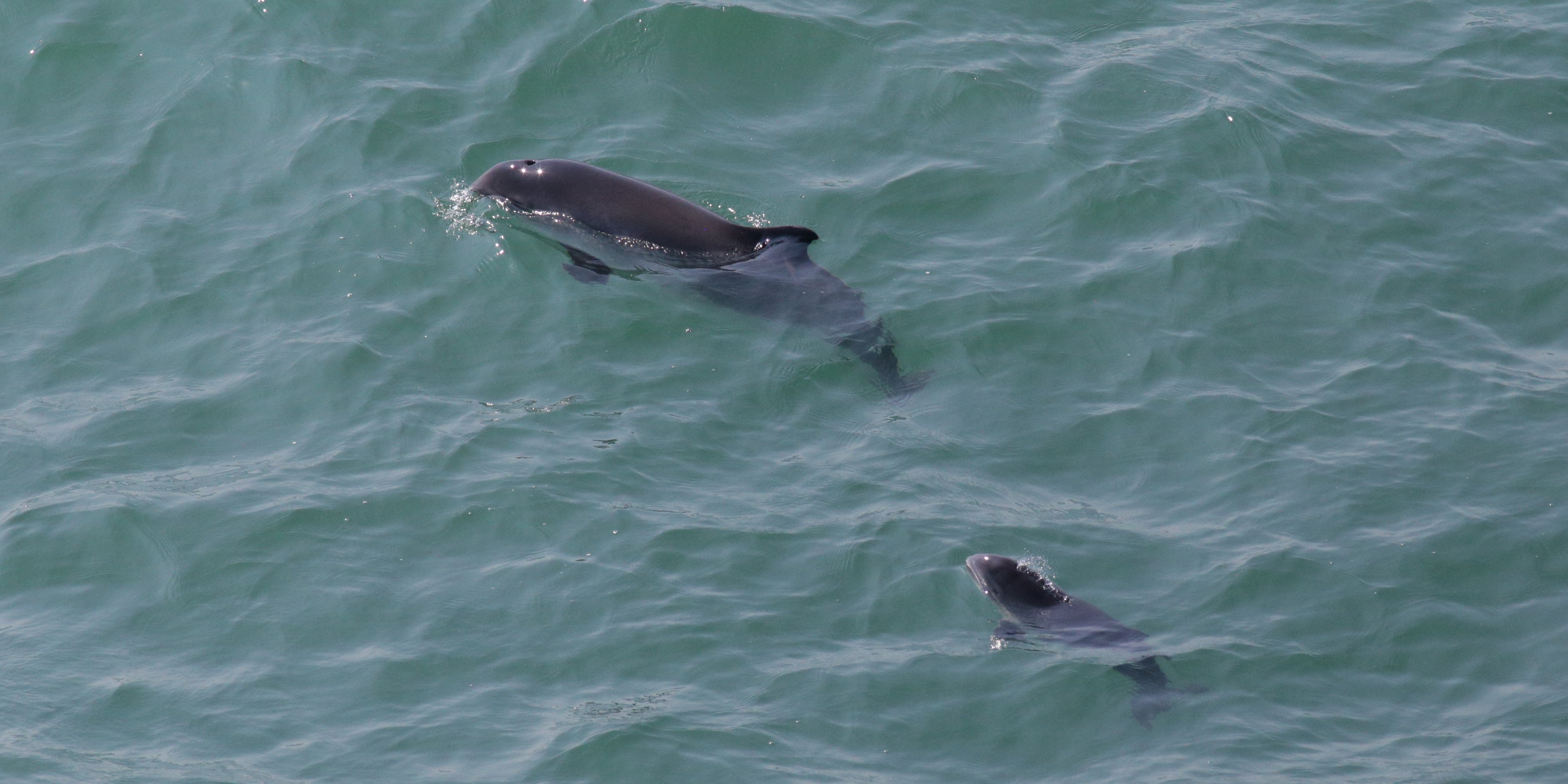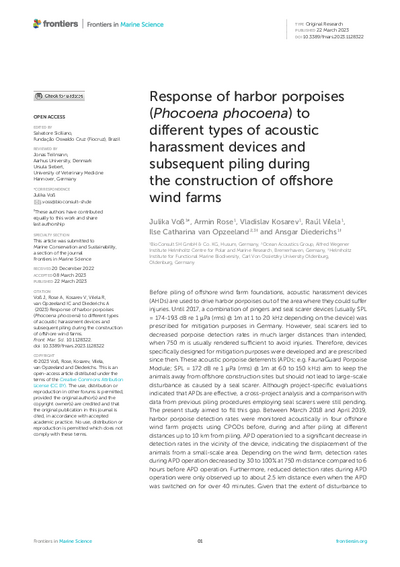To reduce harmful effects on harbour porpoises (Phocoena phocoena), so-called pingers and acoustic deterrent devices are used worldwide, for example in aquafarming or during the construction of offshore wind farms.
Both types of devices generate acoustic signals to temporarily deter harbour porpoises from areas where they could be injured or otherwise harmed.
In two publications based on research by our colleague Julika Voß, BioConsult SH is comparing for the first time different devices and their effects on harbour porpoises across projects.
Accordingly, the choice of a suitable harbour porpoise deterrent device should be based primarily on the desired range of the acoustic signals. In addition, factors such as habituation and effects on other species have be taken into account and regularly monitored in the selection of deterrent devices.


